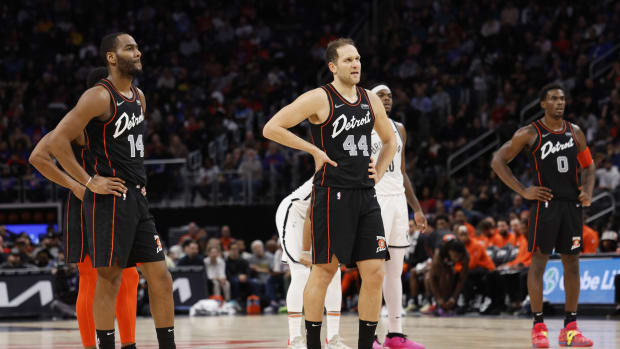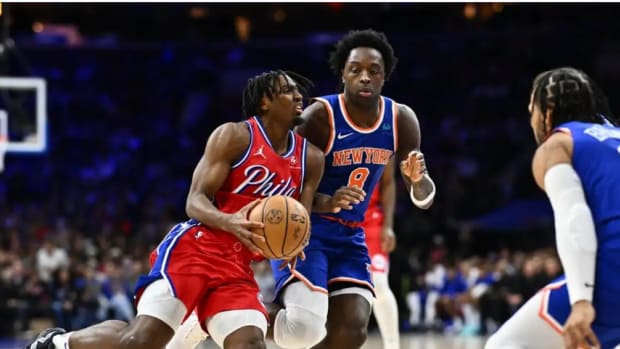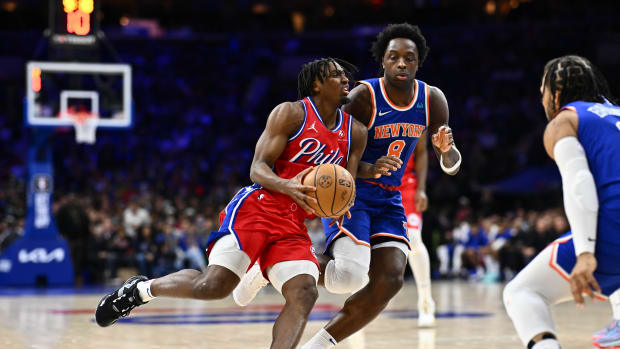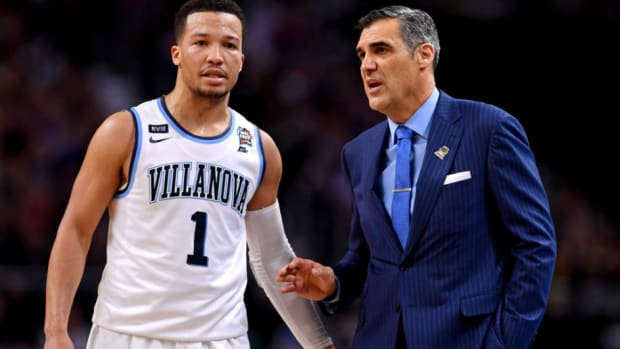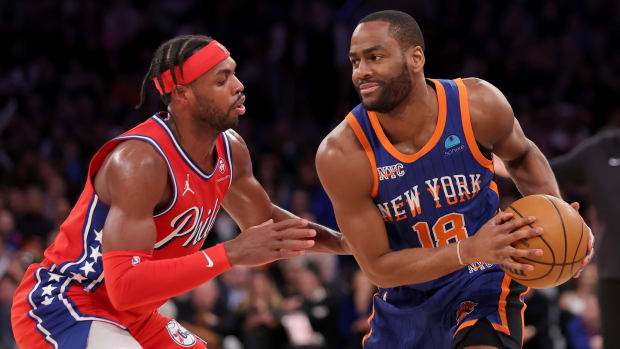Patrick Ewing Didn’t Need A Ring To Prove His Greatness: The Beginning
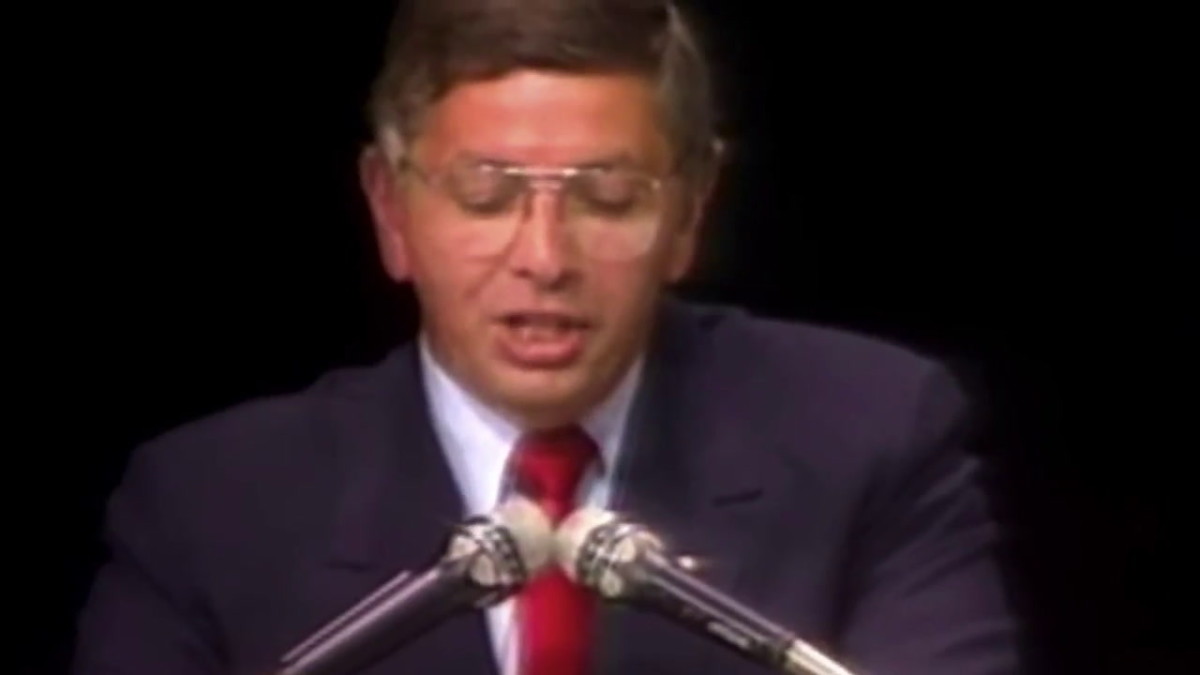
By Kaelin Tully, Special to Knicks SI
Patrick Ewing had a way of making the Knicks feel larger than life. Of course, his legacy is still defined by what he failed to achieve. The measuring stick for greatness in basketball is, by and large, championships. Legacies get swept up in accolades, ESPN highlights, injuries, and time. The game changes as the hourglass flips over and over again. Still, it’s possible to shift the lens ever so slightly and see that Ewing gave more to the game, the city, and culture than the finger roll or the Pippen poster that represent his career. Jeff Van Gundy once called himself a “branch” on the tree of Ewing. By that thinking, the branches that stem from the tree of the Patrick Ewing era are still sprawling.
In 1985, there was a 12-year title drought in New York City and the Knicks stumbled through a stacked Atlantic Division season after season. Bernard King offered a flicker of excitement before suffering a devastating injury, so there wasn’t much of a torch to pass to the 22-year-old out of Georgetown, who seemed to be the glimmer of hope the city needed. Ewing was an elite defensive prospect and the most coveted college player since Kareem Abdul-Jabbar. Eventually, he would be known as the greatest jump-shooting big man in the NBA, but out of college, his offensive game was still raw.
With King out, Ewing shared the floor with Gerald Wilkins, Pat Cummings, and Rory Sparrow in his rookie year. A different brand of basketball arrived in The Garden with Patrick Ewing, who could never play the part of the rookie. He was ejected from his second game, squared up with Buck Williams in his third, and elbowed Steve Stipanovich, all before the end of his first preseason. This spirit would come to be the foundation for a 90s Knicks team that embodied the intangibles Ewing brought to the floor — heart and toughness.
Season ticket sales skyrocketed from 5,700 to 11,000 in just his first year, but the warm welcome at the Garden was short-lived. Although he played his way to the All-Star game and earned the title of Rookie of the Year, Ewing appeared in only 50 games that season due to injury. Before the start of his sophomore season, the Knicks took Kenny Walker with the fifth pick in the first round. The plan was that Bernard King would walk in the offseason, so Walker could slide into his role at small forward. Missing on a top-five pick the year after drafting Patrick Ewing is something the Knicks couldn’t risk, but behind Walker went Ron Harper, John Salley, Mark Price, Scott Skills, Jeff Hornacek, Dell Curry, and Dennis Rodman, to name a few. Patrick Ewing’s Knicks finished last in the Atlantic Division for the second year in a row.
The revolving door of coaches continued. Kenny Walker would go on to bring New York their first championship in the slam dunk competition, and that’s about all he would do. Head coach Hubie Brown swapped for Bob Hill until the arrival of college coach Rick Pitino in 1987.
Despite Ewing fighting through injuries and putting up respectable performances his first two years in the league, the Knicks continued struggling. So much so, Rick Pitino had an attendance clause in his coaching contract — it led to the development of an exciting high-pace, 3-point bombing offense with pressure defense that would draw crowds to The Garden. Under the guidance of Pitino, Patrick Ewing made his first playoff appearance that year with the “Bomb Squad” surrounding him. That team set a new record for three-point attempts as well, clocking in at 1,147 on the season.
After Mark Jackson earned his Rookie of the Year title in 1987, the Knicks looked hot. For all the turnover in the front office and the missed Kenny Walker pick, there was still a real foundation. Pitino gave the Knicks an identity and an offensive system that worked for their star. In 1988, they selected the best player available in point guard Rod Strickland, and they made their first trip to the second round of the playoffs after slamming Charles Barkley’s 76ers.
Instability continued to wrack the front office. As Ewing looked toward his fifth season, general manager Al Bianchi and Pitino never really saw eye to eye. Pitino left to coach college basketball, and his assistant Stu Jackson took over as Ewing had a career year, averaging 28.6 points per game and 11 rebounds on 55.1 percent from the field and an impressive four blocks. However, in the middle of the 89-90 season, the Knicks made the critical decision to trade Rod Strickland because he was a poor fit with Mark Jackson. Strickland went on to flourish in San Antonio, proving to be a reliable scorer and distributor. On the list of mistakes made by the front office during the Patrick Ewing era, the 1986 draft might be on top, but shipping out Strickland is up there. Had he stayed on for the Patrick Ewing era, the 90s Knicks would’ve had the point guard they needed.
Coming off of a career year for Patrick Ewing, the Knicks fired coach Stu Jackson after a disappointing start to the season. His replacement John MacLeod didn’t turn much around. Ewing’s second and third scoring options were aging and injured Kiki Vandeweghe and Maurice Cheeks. The Knicks finished 39-43 and squeaked into the eighth seed in Eastern Conference, where they met Chicago’s first dynasty. Charles Oakley brought all the intangibles on defense, but Ewing was left to carry the weight on offense once again. They were swept by Chicago and general manager Al Bianchi lost his job in the offseason along with MacLeod, making room for Ernie Grunfeld to take over in the front office. Patrick Ewing was in his prime, but the franchise still couldn't get it right for him.
As a dynasty grew in Chicago, frustrations piled up on the East Coast. The New York Times called Patrick Ewing “one of the most unpopular athletes on the New York scene” in August of 1991. Ewing’s Knicks still hadn’t advanced beyond the second round six seasons into his professional career and he’d already played for six coaches. On a legal technicality, Ewing barely missed being traded to Golden State with Chris Mullin that summer.
So after a year as a commentator for NBA on NBC, a stud out of the West Coast accepted the offer to come to New York — his decision relied on a commitment from the city’s star player. Pat Riley and Patrick Ewing bought into each other in the summer of 1991, and together they ushered in a legendary brand of New York basketball.

